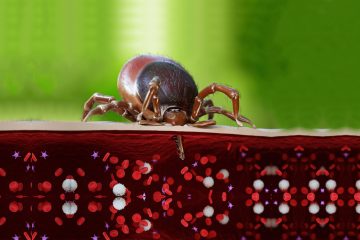- Home
- Find A Physician
- FIND A PHYSICIAN
- LymeTimes
- Current Issue
- Archives
- FEATURED LYMEDISEASE.ORG ISSUES
- Resources
- LYME LITERATE PHYSICIAN VIDEOS
- Physicians
- Members
- About Us
- Resources
E veryone knows that inflammation isn’t good, especially when it becomes chronic. But to do something about it, you need to understand what’s driving the inflammation in the first place.
Though you can’t actually see chronic inflammation, you can certainly feel it. It manifests as joint discomfort, stiffness, general achiness, fatigue, low stamina, brain fog, slow mental activity, depressed mood, and all the other symptoms associated with chronic Lyme disease. Simply put, you feel “inflamed.”
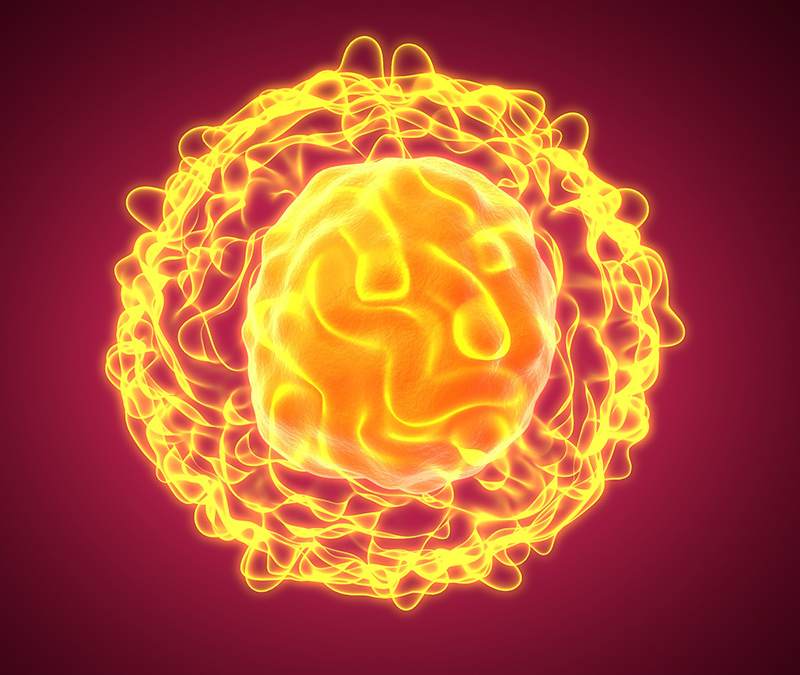 The root of inflammation is excessive turnover of cells. We all lose cells, and up to a certain point, it’s perfectly normal. Cells in the body are constantly wearing out, getting injured, or being invaded by microbes. In fact, we typically lose 50-70 billion cells every day. While much of cellular turnover is accounted for by cells that are shed from the body, such as skin and intestinal cells, tissues inside the body are losing cells, too.
The root of inflammation is excessive turnover of cells. We all lose cells, and up to a certain point, it’s perfectly normal. Cells in the body are constantly wearing out, getting injured, or being invaded by microbes. In fact, we typically lose 50-70 billion cells every day. While much of cellular turnover is accounted for by cells that are shed from the body, such as skin and intestinal cells, tissues inside the body are losing cells, too.
When cells die, they break apart and create debris. If enough debris collects in tissues, it obstructs the flow of water, nutrients, and oxygen that cells need to stay healthy. At the same time, metabolic waste produced by cells is trapped around the cell, which, of course, isn’t a good thing. If enough debris collects, cells start to choke in their own waste.
Keeping cells free of debris
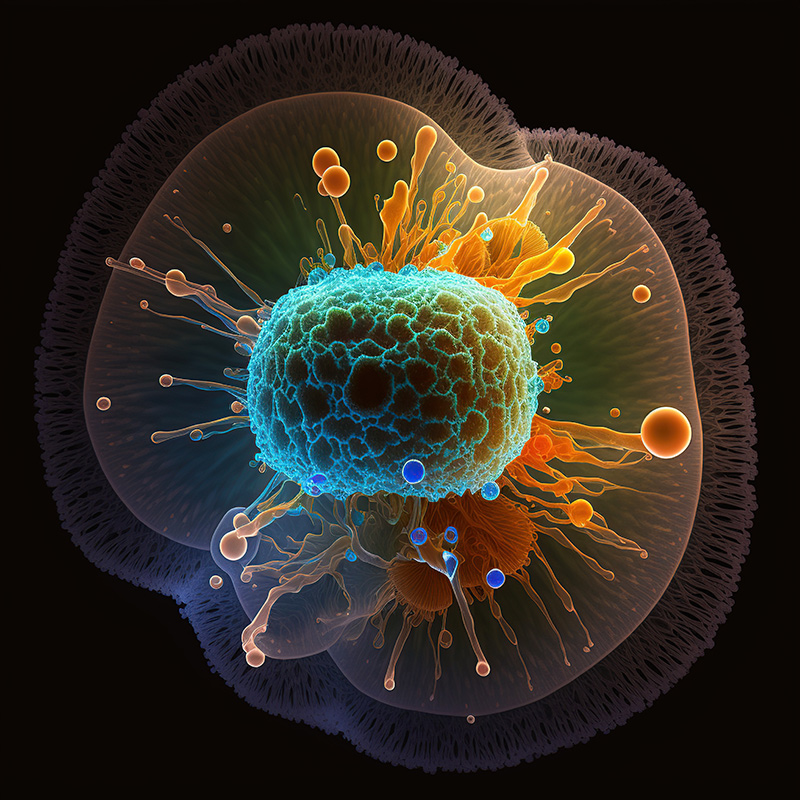 You depend on your immune system to keep the spaces between cells free of debris so that they get good flow. Specialized immune cells, called macrophages, constantly patrol your tissues searching for debris — they are the garbage collectors of the immune system. Macrophages engulf debris from dead cells and then break it down with strong acid and potent free radicals.
You depend on your immune system to keep the spaces between cells free of debris so that they get good flow. Specialized immune cells, called macrophages, constantly patrol your tissues searching for debris — they are the garbage collectors of the immune system. Macrophages engulf debris from dead cells and then break it down with strong acid and potent free radicals.
This process is happening in the body all the time–you couldn’t survive without it. As long as the collection of debris doesn’t exceed the capacity of the immune system to clean it up, you never know it’s happening. It’s deemed inflammation only when accumulation of debris from cell turnover is greater than the immune system can process.
Tissues congested with debris stresses cells. When cells suffer, you feel it as symptoms. The type of symptoms depend on the types and location of cells that are suffering. Symptoms associated with inflammation can be transient and localized when cell injury is finite, such as with an acute injury, or chronic and systemic when cell injury is ongoing, such as with chronic Lyme disease or really any chronic illness.
Let’s take a look at inflammation in more detail, particularly chronic inflammation as it impacts people with Lyme disease, along with the best ways to quash it.
Understanding the acute inflammatory response
Suppose you’re walking barefoot in the yard one summer day and accidentally step on a sharp piece of glass hidden in the grass. Pain alerts you to the injury and you stop to assess the situation. If the wound isn’t deep, you’re up to date on your tetanus vaccination, and a rinse in the sink reveals no foreign objects in the wound, you place a bandage over the area, and you’re back on your way.
“Macrophages in the area immediately begin cleaning up debris left by injured cells. If the debris is more than they can handle, the macrophages release chemical messengers, called cytokines, to call in reinforcements from other white blood cells (WBCs).”
By later in the day, however, the wound is slightly swollen, red, hot, and painful. What you’re feeling is your body’s inflammatory response. The very second the injury occurs, your immune system goes to work. Macrophages in the area immediately begin cleaning up debris left by injured cells. If the debris is more than they can handle, the macrophages release chemical messengers, called cytokines, to call in reinforcements from other white blood cells (WBCs). Injured cells release substances that activate nerves, alerting the brain to the injury (felt as pain at the site).
Swelling occurs because blood vessels dilate to allow an influx of WBCs and flush the area with fluid. Macrophages and arriving WBCs engulf debris, foreign matter, and microbes that have entered through the open wound, and destroy the material with potent free radicals and hypochlorous acid. It’s a noxious process that causes collateral damage to normal cells, but it’s part of the healing process.
Once the injury is contained and the mess is cleaned up, WBCs migrate out of the area. Surviving cells repair damage from the injury and the inflammatory process itself. Gradually evidence of the injury disappears like nothing had ever happened.
When inflammation becomes chronic
Imagine if the acute inflammatory process was going on in tissues throughout your body and it never resolved. That’s exactly what happens with the chronic inflammation associated with chronic Lyme disease. The driving force is bacteria invading cells. It’s not an all-out invasion like you would find with an acute infection, such as pneumonia, however. It’s an insidious migration of bacteria into tissues throughout the body — in the brain, heart, joints, muscles, kidneys, intestines, everywhere.
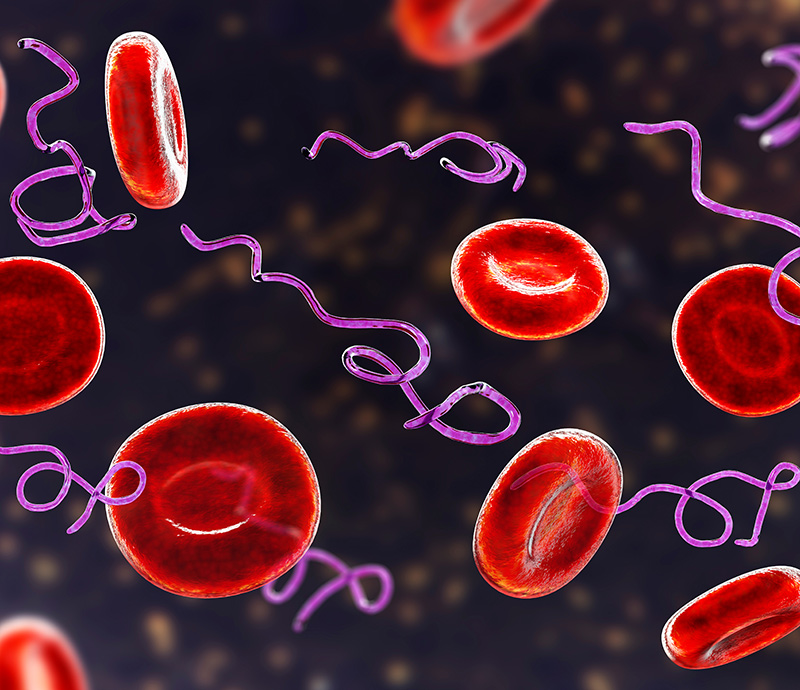 When Lyme bacteria enter the bloodstream from a tick bite, WBCs gobble up the bacteria in an attempt to get rid of them. The bacteria, however, have sophisticated ways of staying alive inside the WBCs. Instead of eradicating the bacteria, the WBCs unintentionally become transport vehicles to distribute bacteria to tissues throughout the body. On arrival, the bacteria surface and infect other cells. It’s not as much a deluge of invasion as it is a random sprinkling. Tissues throughout the body become peppered with cells that have been infected with bacteria.
When Lyme bacteria enter the bloodstream from a tick bite, WBCs gobble up the bacteria in an attempt to get rid of them. The bacteria, however, have sophisticated ways of staying alive inside the WBCs. Instead of eradicating the bacteria, the WBCs unintentionally become transport vehicles to distribute bacteria to tissues throughout the body. On arrival, the bacteria surface and infect other cells. It’s not as much a deluge of invasion as it is a random sprinkling. Tissues throughout the body become peppered with cells that have been infected with bacteria.
The Lyme bacteria, Borrelia burgdorferi, are intracellular, which means they infect and live inside cells. The cells provide nutrients to make new bacteria as well as protection from the immune system. Once the bacteria have used up the resources a cell has to offer, they surface and infect other cells.
“As the process spirals out of control, the immune system loses the capacity to keep microbes in check. Before long, tissues throughout the body start to look like a war zone. “
The immune system, of course, doesn’t just stand idly by. It’s a delicate situation, however. With infected cells nestled amongst healthy cells, the immune system must call in its special elite tactical WBCs (which are part of the adaptive immune system) to selectively target infected cells without harming normal uninfected cells. It’s a tedious process. To minimize collateral damage to normal cells, the immune system often ends up settling for leaving a few infected cells in place.
Healthy vs. weak cells
How all this plays out is a function of the health of cells as much as the aggressiveness of the bacteria: Cells that are weak from being chronically stressed are more vulnerable to invasion by bacteria. A healthy person with healthy cells who is bitten by a tick may not have much in the way of acute symptoms and may never develop chronic symptoms. It doesn’t mean, however, that the bacteria have been eradicated from the body. They can stay dormant in tissues for a lifetime.
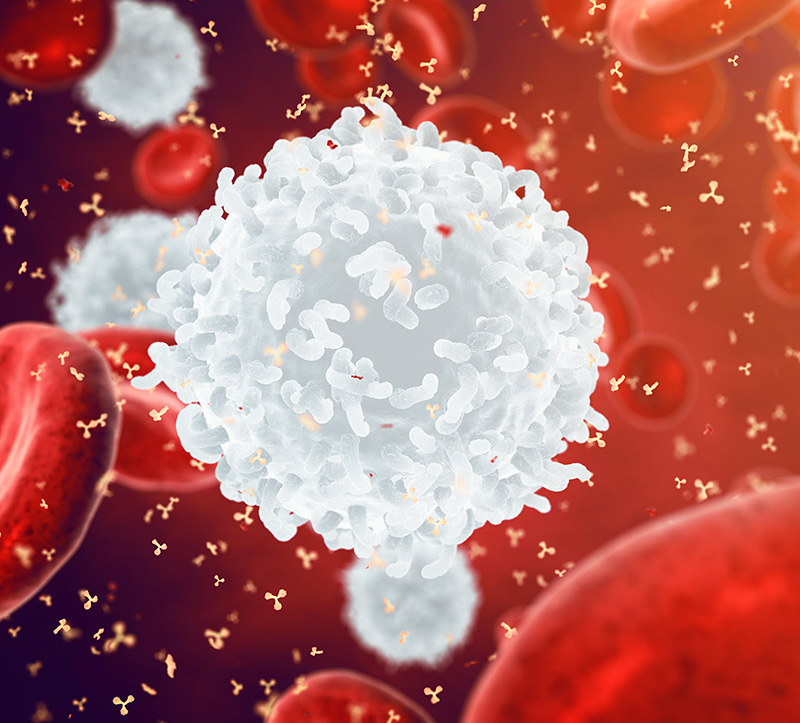 All it takes is a shift in the health of cells for dormant bacteria to surface and invade more cells. The immune system scrambles to keep a lid on things as bacteria erupt and infect other cells. Dead cells break apart and create debris. Macrophages secrete acid and free radicals to break down debris. Reinforcements are called in. More acid. More free radicals. More collateral damage. More debris. Flow of nutrients and oxygen is obstructed, and cells are weakened even further.
All it takes is a shift in the health of cells for dormant bacteria to surface and invade more cells. The immune system scrambles to keep a lid on things as bacteria erupt and infect other cells. Dead cells break apart and create debris. Macrophages secrete acid and free radicals to break down debris. Reinforcements are called in. More acid. More free radicals. More collateral damage. More debris. Flow of nutrients and oxygen is obstructed, and cells are weakened even further.
The invasion intensifies as more cells are infected. Along with inflicting injury to cells in tissues, bacteria infect and kill WBCs. In addition, bacteria throw the immune system off balance by disrupting the cytokines the immune system uses to coordinate the resistance. As the process spirals out of control, the immune system loses the capacity to keep microbes in check. Before long, tissues throughout the body start to look like a war zone. Cells suffer. Symptoms result. It becomes a never-ending cycle of misery.
Setting the stage for chronic inflammation
Though the immune system plays a key role in protecting cells of the body from microbe invasion, the health of cells is also a major player. When cells become chronically stressed, they are more susceptible to being invaded by intracellular bacteria and other microbes. There are five primary categories of factors that weaken cells and set the stage for the chronic inflammation associated with Lyme disease.
- Poor diet
When cells aren’t fed properly, they can’t function properly. Processed foods sourced from grains, beans, and grain-fed meat are overloaded with raw carbohydrates and refined fats that disrupt cellular functions. On the other hand, they’re deficient in the nutrients that cells need to function properly. Poorly nourished cells can’t properly defend themselves against microbes. - A toxic environment
In the modern world, chronic exposure to low levels of toxic substances and free radicals in food, water, and air is hard to avoid. The list includes man-made toxins associated with petroleum products, free-radicals in processed food, and natural toxins such as mold. In addition, the acid and free radicals associated with inflammation are highly toxic to cells. Toxic substances disrupt cellular processes, damage internal working parts of the cells, and weaken cell membranes. Weakened cells are more vulnerable to microbe invasion. - Chronic stress
Being bombarded by the constant stimulation of the modern world is like being chased by a tiger 24/7 — you’re always on high alert. Maintaining a continual fight-or-flight response prevents cells from repairing internal damage. Chronic stress also disrupts sleep, which is prime time for cells to repair internal damage created by working all day. Lack of adequate sleep stresses cells as much as any other factor and always sets the stage for chronic inflammation. - Physical stress
Acute trauma can tip the balance toward chronic inflammation if enough cells are injured. Head trauma seems to be especially significant. Excessive physical activity can certainly contribute to unwanted and unintended inflammation, but being sedentary can be just as bad. The body is designed to move — it stimulates immune system functions, gets blood flowing to flush accumulated debris, and generates endorphins that normalize the inflammatory response — and so lack of movement stresses the body. - Microbes
Borrelia isn’t the only microbe you have to be concerned about if you have Lyme disease. Ticks carry a wide range of microbes, and most people who identify as having chronic Lyme disease are found to have co-infections with multiple tick-borne microbes such as mycoplasma, Bartonella, or Babesia. Beyond that, we all pick up microbes as we go through life. Sometimes all it takes is a new infection, such as flu or COVID-19, to tip the balance toward chronic inflammation. Any type of microbial infection has the potential to contribute to chronic inflammation.
Natural remedies to tame the fires
Eating a healthy diet, living in a clean environment, learning to live around stress, and staying active are all very important for keeping cells in your body healthy. However, the chemical substances in plants defined as herbs can take that protection to the next level. Taking herbs can give you the advantage that you need to overcome chronic inflammation and return to a normal life.
“”Plants are the most sophisticated chemists on the planet. The chemical substances that plants use to solve problems and protect cells are called phytochemicals.”
Plants must protect their cells from a wide range of stress factors: damaging free radicals, physical stress from harsh weather, toxic substances, harmful radiation, insects, invasive fungi, parasites, and, last but not least, every variety of microbe. Plants do this with their own natural chemistry. In fact, plants are the most sophisticated chemists on the planet. The chemical substances that plants use to solve problems and protect cells are called phytochemicals.
Mushrooms, which are technically fungi, also have to deal with similar stress factors as plant. They also produce a wide range of protective substances that mirror the protective properties of phytochemicals found in plants.
When we consume plant phytochemicals, the benefits are transferred to us.
The three primary things that phytochemicals do for us:
- Suppress microbes: All plants contain phytochemicals with antimicrobial properties, but some plants are more strongly antimicrobial than others. It all depends on the types of microbes the plant is exposed to in its natural environment. Herbs with strong antimicrobial phytochemicals directly suppress a wide range of bacteria, protozoa, viruses, and fungi. This allows the immune system to regain its footing and get the microbes under control.
- Reduce inflammation: By protecting our cells from harmful stress factors such as free radicals and toxic substances, cell turnover is reduced, along with the destructive inflammation that comes with it. This lessens the immune system’s workload so it can better do its job.
- Improve cellular communications: Phytochemicals help normalize disrupted hormones and other chemical messengers in the body. Because all cells must be in constant communication for the body to function as a unit, wellness is only possible when cellular functions are coordinated. This includes toning down inflammatory cytokines that push the immune system into overdrive.
How herbal supplements can help
The best way to gain the level of phytochemical protection you need to help your immune system win the internal battle against invasive microbes is to take herbal supplements — specifically, standardized botanical extracts.
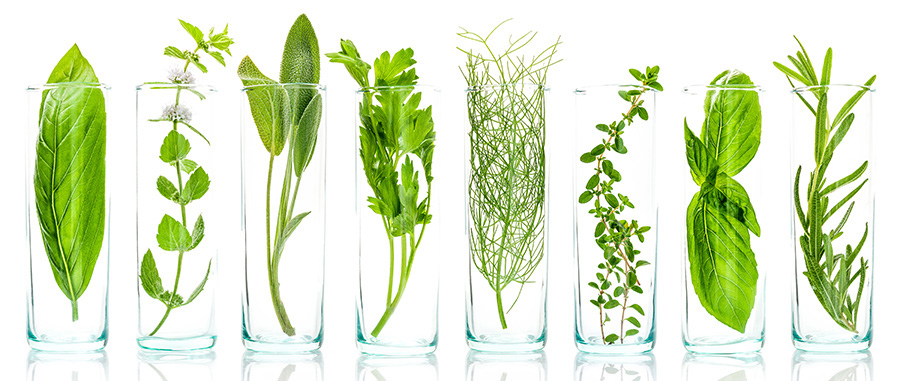
Standardized botanical extracts take herbal supplements to the next level. They’re made with wild plants or plants that have been cultivated to enhance their phytochemical content and are grown in an environment that doesn’t introduce unwanted chemical toxins. The extraction process also yields the greatest concentration and the widest spectrum of phytochemicals in the plant. And the final product is standardized to a concentration of one or several key phytochemicals in the plant, so you know what you’re getting.
Below are a few of my favorite herbs for mitigating the systemic chronic inflammation associated with chronic Lyme disease. Though all of the herbs have value in suppressing microbes and reducing inflammation, three of the herbs mentioned below — Japanese knotweed, cat’s claw, and Chinese skullcap — were found in a 2020 study from Johns Hopkins University to have greater activity against Borrelia burgdorferi than the antibiotics, doxycycline and azithromycin.
Japanese knotweed with resveratrol has been used for centuries in traditional Asian medicine. It’s a potent antioxidant with antimicrobial and anti-inflammatory properties. Japanese knotweed may eradicate various phases of Bartonella bacteria, according to a study in the journal bioRxiv.
Suggested dosage: 200-800 mg Japanese knotweed (standardized to 50% trans-resveratrol), two to three times daily.
Side effects: They’re rare, with low potential for toxicity. Caution is advised if you’re also taking anticoagulants, because resveratrol has blood-thinning properties. Avoid it during pregnancy.
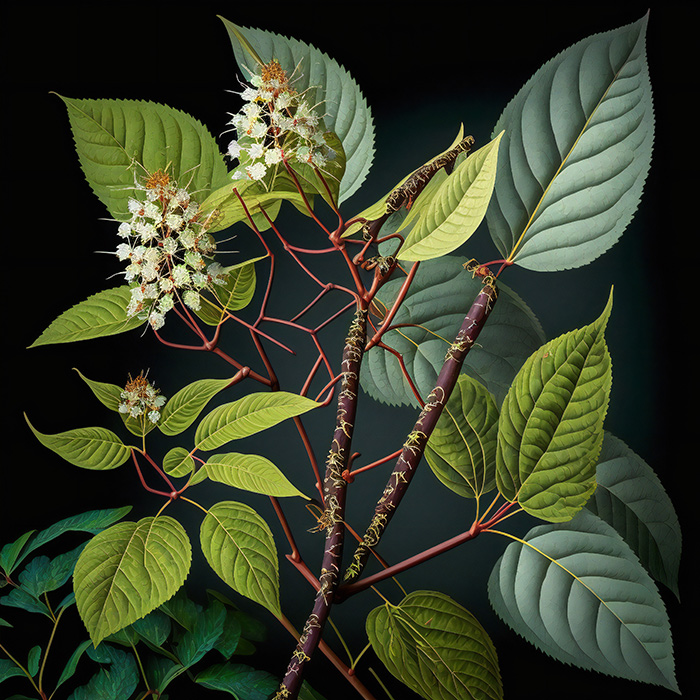
Cat’s claw has been used for thousands of years by indigenous people of the Amazon for treating a variety of inflammatory conditions. Not surprisingly, the name comes from the shape of the thorns on the woody vine from which the medicine is extracted.
The medicine is derived from the inner bark of the vine. Common traditional uses include age-related cognitive issues, rheumatism, asthma, stomach problems, and tumors. It was also one of the pre-antibiotic treatments for syphilis.
Cat’s claw offers immune-modulating properties, and it has been found to increase WBCs, including B and T lymphocytes, natural killer (NK) cells, and granulocytes. Cat’s claw is known to enhance a specific type of natural killer cell, called CD 57, which is commonly deficient in people with Lyme disease.
- Anti-inflammatory and antimicrobial properties
- Beneficial healing properties for the intestinal tract
- Enhances DNA repair and prevents cells from mutating
- Potent antioxidant properties
- Dilates blood vessels and normalizes blood pressure
- May reduce amyloid deposition associated with cognitive decline
Suggested dosage: 375 mg, one to two times daily. Inner bark extract standardized to 3% alkaloids is preferred.
Side effects: Occasionally, cat’s claw can cause stomach upset, but it is generally very well tolerated. Cat’s claw requires activation by stomach acid to be effective and should be taken with food. Acid-blocking drugs can prevent the activation of cat’s claw. Taking apple cider vinegar with the herb may enhance activation.
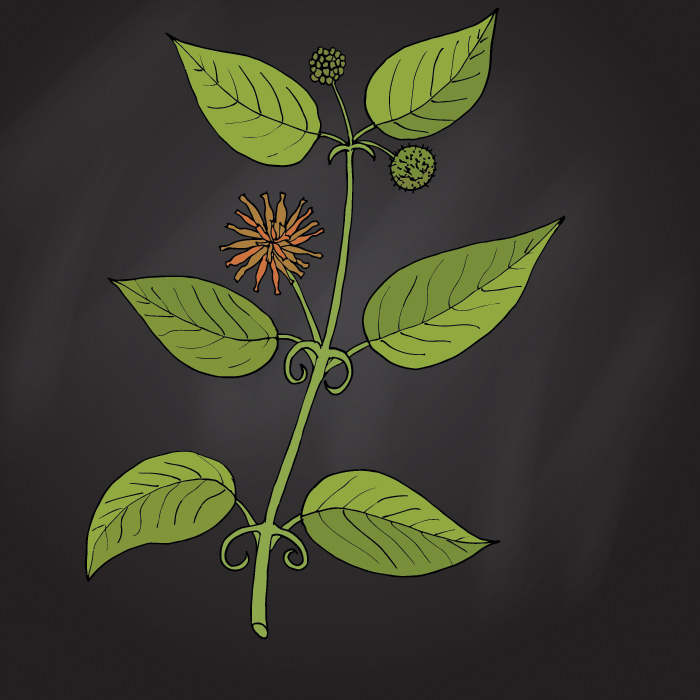
When combined with other herbs, Chinese skullcap has potent synergist properties. Additionally, it has strong antimicrobial and immunomodulating properties that are beneficial for suppressing mycoplasma and protecting tissues and organs infected with the microbe.
Suggested dosage: 400-1,000 mg, two to three times daily. Root extract standardized to >30% baicalin is preferred. Note: American skullcap does not offer the same antimicrobial properties and should not be substituted.
Side effects: Gastrointestinal upset can occur, but side effects tend to be rare, even at high doses.
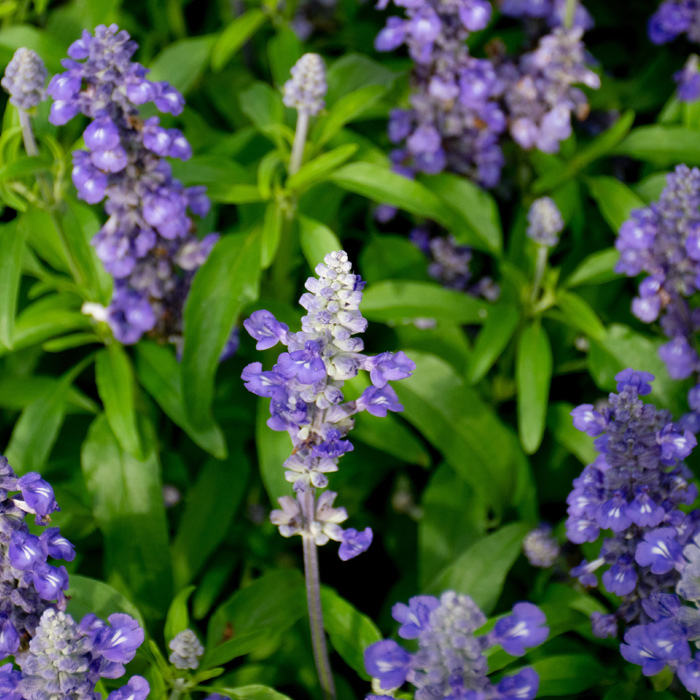
Native to India, andrographis has antibacterial, antiviral, and antiparasitic properties to defend against a spectrum of microbes. The herb has immune-enhancing, cardioprotective, and liver-protective qualities. Like cat’s claw, andrographis is a staple among natural Lyme protocols.
Suggested dosage: 200-800 mg (extract standardized to 10-30% andrographolides), two to three times daily.
Side effects: Approximately 1% of people who take andrographis develop an allergic reaction with whole-body hives and itching skin. This is a higher percentage than most other herbs. The reaction will resolve gradually over several weeks once the herb has been discontinued.
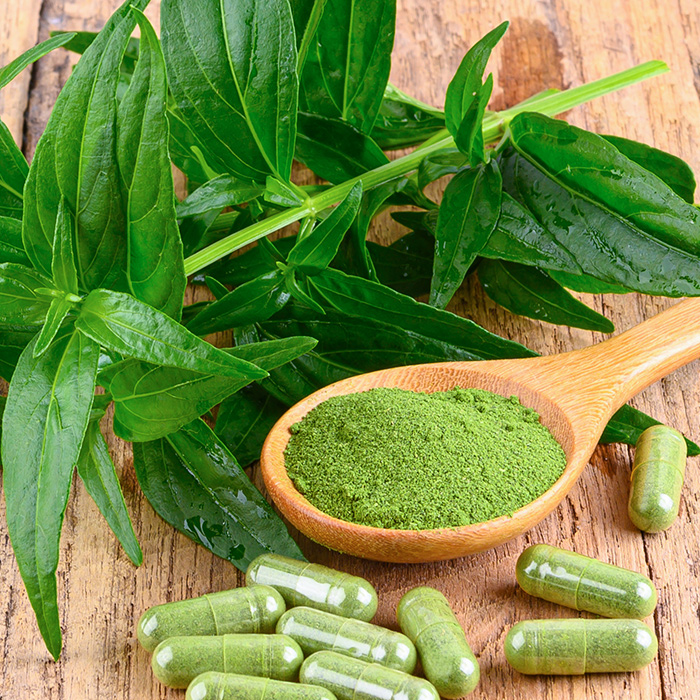
Reishi is a mushroom known for exceptional immune-modulating and antiviral properties. Immune modulation means that it strongly reduces destructive inflammatory processes, but at the same time, enhances normal immune function and increases the ability of the immune system to deal with threatening microbes.
- Immune-modulating
- Anti-inflammatory
- Antiviral
- Adaptogenic (restores calm in the face of stress)
- Restores normal sleep
- Anti-fatigue
- Supports normal cardiovascular function
- Liver protective
Suggested dosage: 175 mg, one to two times daily. Fruitbody standardized to 7% beta glucan is preferred.
Side effects: Reishi is extremely well tolerated, with rare side effects and no known toxicity.
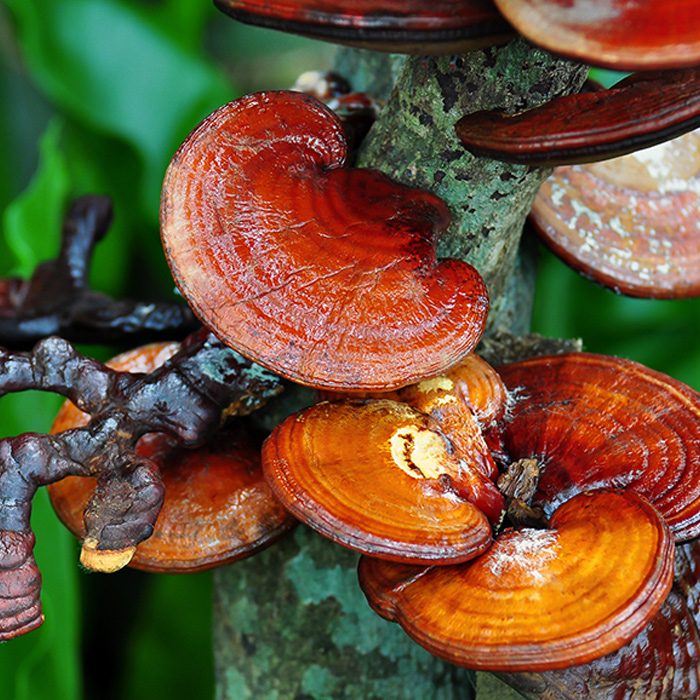
With its natural bright yellow color, turmeric is the spice that defines an Indian curry. It’s perhaps in part the reason India has half the cancer rate as the United States and possibly the lowest Alzheimer’s rate in the world.
Turmeric offers powerful anti-inflammatory properties and has long been used for arthritis and similar conditions. The herb is also known to inhibit cancer formation in multiple stages, in addition to decreasing the risk of dementia.
Not only does turmeric have antioxidant and anti-inflammatory properties, but it may be useful in reducing stomach ulcers, unlike anti-inflammatory drugs. It’s also known to protect liver cells.
- Useful for decreasing inflammation-related symptoms of arthritis
- Reduces the risk of dementia
- Protects liver cells
- Heals stomach ulcers
Suggested dosage: 250 mg, one to two times daily. Rhizome extract standardized to 45% curcuminoids is preferred.
Side effects: Turmeric has a very long history of use in humans, and side effects are rare.
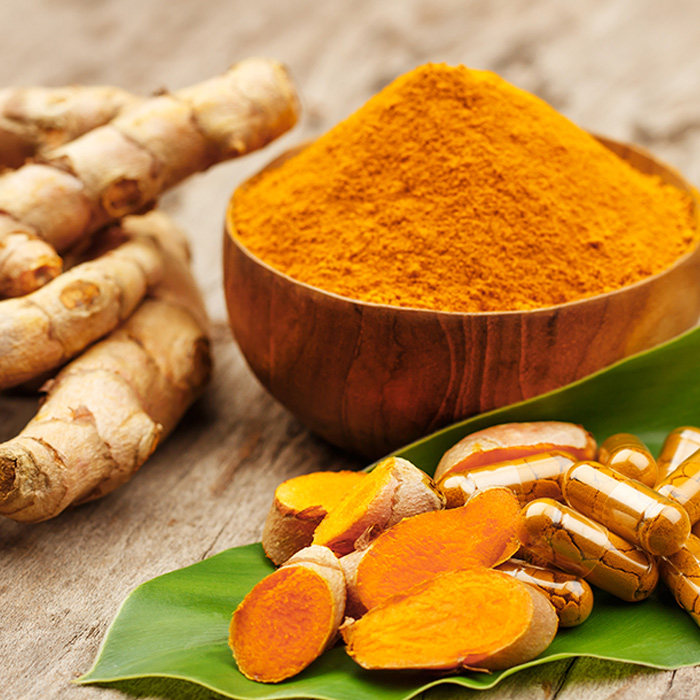
The name of this herb rolls off your tongue just like it is spelled: Row-dee-oh-la. Traditionally, rhodiola was used to improve work tolerance at high altitudes, and research suggests that it may increase oxygen delivery to tissues, especially the heart. It’s a favorite adaptogen of Russian athletes and workers for decreasing fatigue, increasing alertness, and improving memory.
Rhodiola rosea is primarily sourced from Siberia (though interestingly, it can also be found in the mountains of North Carolina); other species of rhodiola grow worldwide. In addition to enhancing immune function, it has multiple benefits.
- Reduces fatigue and restores energy
- Improves stress tolerance
- Enhances immune function
- Enhances cardiovascular function and is heart protective
- Protective of nerve and brain tissue
- Has antidepressant properties by increasing serotonin in the brain
Suggested dosage: 275 mg, one to two times daily. Root extract standardized to 3% rosavins and 1% salidroside is preferred.
Side effects: For some people, rhodiola is mildly stimulating. In general, however, it’s a well-tolerated, calming herb.
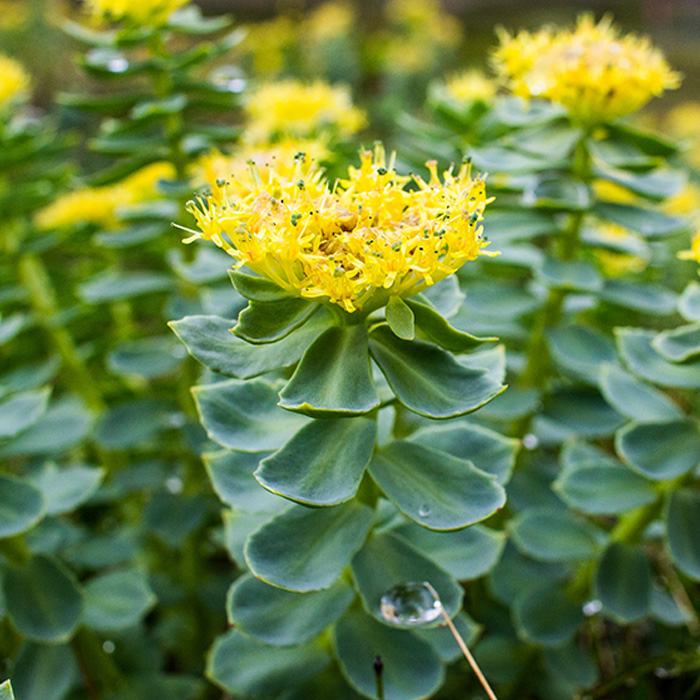
Ashwagandha is one of the best herbs for balancing hormones and reducing the detrimental effects of stress. Native to India and Africa, the herb is derived from the root of a plant distantly related to tomatoes and potatoes.
Ashwagandha is a calming adaptogen that is particularly useful in balancing the HPA axis in the brain (the control center for hormone regulation). By restoring balance in this critical pathway, ashwagandha improves stress resistance, allows for improved sleep, reduces brain fog and fatigue, eases the transition through menopause (especially hot flashes), and has anti-inflammatory, antioxidant, and immune-enhancing properties.
- Balances the HPA axis (central hormone pathways of the body)
- Improves stress tolerance
- Reduces brain fog
- Improves sleep quality
- Balances thyroid function
- Increases energy
- Reduces menopausal symptoms
Suggested dosage: 225 mg, twice daily. Root and leaf extract standardized to 10% withanolides is preferred. [Editor’s note: “withanolides” is a compound found in this and some other herbs.]
Side effects: Ashwagandha has been used as both food and medicine for thousands of years. Side effects of any type are unusual and mild. Ashwagandha is appropriate for men, women, and adolescents. Occasionally, ashwagandha causes mild stimulation in some individuals. Ashwagandha does contain iron and should be avoided by individuals who retain iron (hemochromatosis).
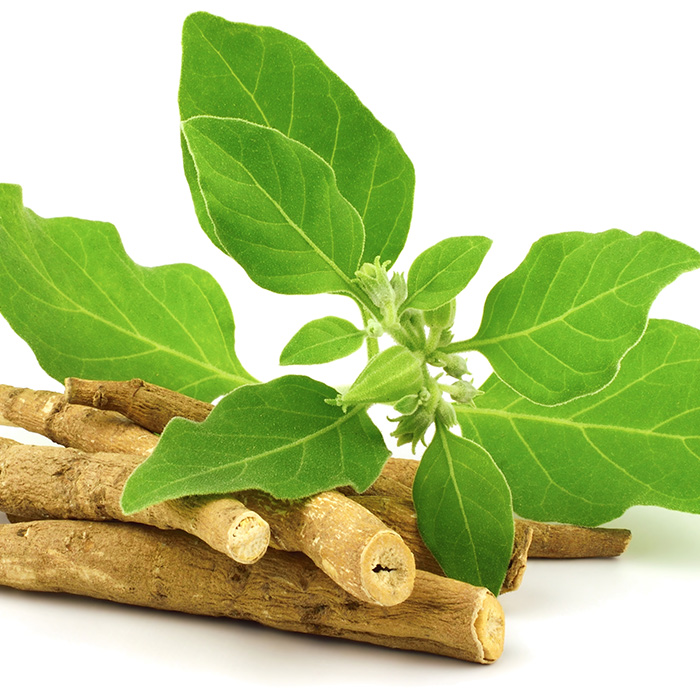
Cannabis sativa was one of the earliest plants cultivated by humankind. The very first use of cannabis was documented in China around 4,000 BC. A very versatile plant, it was used for food, medicine, religious and spiritual rituals, industrial fiber, and, of course, recreation.
Cannabis sativa has several alter egos, but marijuana and hemp are the two best known. Though the two plants look the same, their chemical composition is quite different. Whereas marijuana contains both THC (the compound that gives marijuana its euphoric effects) and CBD (which causes no euphoria), hemp contains almost exclusively CBD — only cannabis with less than 0.3% THC can be legally classified as hemp.
CBD has been linked with reduction of pain, fewer seizures, improved mood and sleep, protection of the nervous system, and a range of other health benefits.
- Anti-inflammatory
- Decreased pain
- Enhanced sense of well-being
- Increased calm
- Improved sleep
- Reduced stress (thanks to CBD’s adaptogenic properties)
Suggested dosage: 15-30 mg, one to three times daily, as needed. (You can slowly increase the dosage to 50-100 mg, three times daily, if needed, depending on your tolerance.) A hemp aerial parts full-spectrum extract is preferred.
Side effects: Reported side effects of hemp oil with CBD are generally mild and uncommon and can include tiredness, loose stools, and slight changes in appetite and weight (either increased or decreased). Both hemp oil with CBD (hemp flower-bud extracts) and purified CBD (CBD isolate) have been shown in both animal and human clinical trials to be safe and well-tolerated.
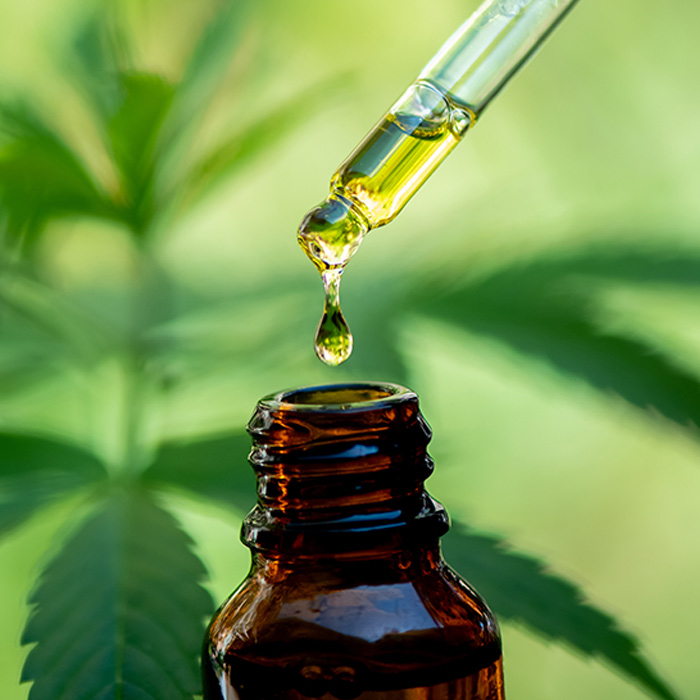
Inflammation Solutions Beyond Herbs
When inflammation occurs in excess, free radicals and acid break down normal cells and tissues as well. In chronic systemic inflammation, all tissues in the body are adversely affected. To add to the anti-inflammatory benefits of herbal therapy, the following lifestyle factors can help neutralize free radicals and excess acidity, reduce damage to tissues, and ease inflammation.
Eat an Antioxidant-Rich Diet
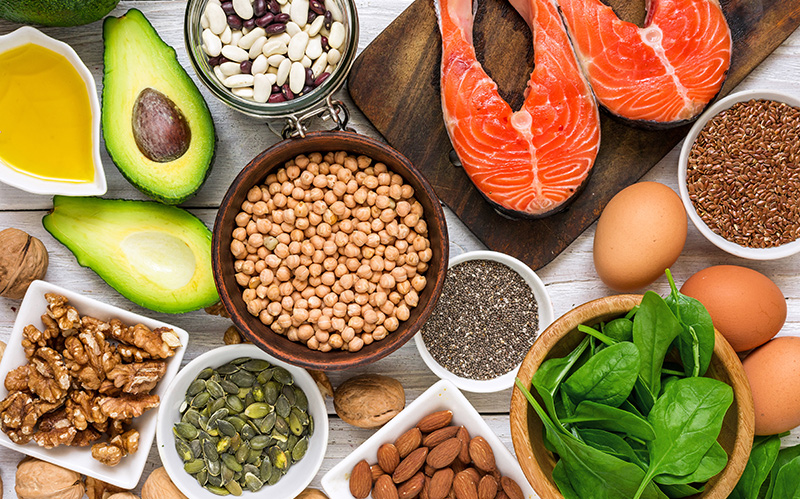 Antioxidants in foods help neutralize free radicals before they have an opportunity to damage tissues. Vegetables and fruits, such as berries, are loaded with free-radical neutralizing antioxidants.
Antioxidants in foods help neutralize free radicals before they have an opportunity to damage tissues. Vegetables and fruits, such as berries, are loaded with free-radical neutralizing antioxidants.
For the most nutritious anti-inflammatory diet, skip the center aisles of the grocery store, which are often filled to the brim with boxed and prepackaged items that are significantly lower in antioxidants than fresh foods. Instead, head to the perimeter of the store and stock up on whole foods, including vegetables, healthy protein sources (fish, beans, eggs, or organic meats), healthy fats such as olive oil and avocados, and low-sugar fruits.
Take Omega-3 Fatty Acids
Omega-3 fatty acids are important molecules that our bodies cannot make and so they must be consumed. (The number 3 refers to the position of a certain bond within the molecular chain.) “Omega 3s,” as they are often called, are a particular group of unsaturated fats that are found in abundance in fish, krill, and certain nuts and vegetables.
 When you consume Omega 3s regularly, they offer extraordinary health benefits. There is much evidence that they significantly reduce the risk of heart attack. Their anti-inflammatory properties also provide some relief from arthritis (and help to prevent arthritis). Notably, Omega 3s also promote brain health, protecting cognitive function. Some studies suggest that they may even help with mood stabilization. They also help optimize your blood lipids, such as by reducing LDL cholesterol.
When you consume Omega 3s regularly, they offer extraordinary health benefits. There is much evidence that they significantly reduce the risk of heart attack. Their anti-inflammatory properties also provide some relief from arthritis (and help to prevent arthritis). Notably, Omega 3s also promote brain health, protecting cognitive function. Some studies suggest that they may even help with mood stabilization. They also help optimize your blood lipids, such as by reducing LDL cholesterol.
Fish oil supplements are a popular way to enhance the benefits of dietary omega 3s, but Antarctic krill oil offers significant advantages over fish oil. The omega 3 fatty acids in krill oil are phospholipids (as opposed to triglycerides found in fish oil) which are easily absorbed by the intestinal tract and utilized by cells. Better absorption means you need less of it to achieve the same health benefits as compared to fish oil. Krill oil also has astaxanthin, a potent antioxidant with more anti-inflammatory properties.
Whether you use fish oil or krill oil supplements, be aware that they are concentrated: At high doses, Omega 3s act as a blood thinner. If you notice bruising, discontinue use. Talk with your healthcare provider about recommended doses.
Alkalize Your Water
Alkalized water helps to oppose the acidity in your body, which is brought on by stress, poor diet, chronic infections, and even Herxheimer reactions. Drinking alkalized water (which has a pH of 8-10) may help reduce inflammation in your body. It is a simple and cheap way to turn down the heat.
Spend Time Outside
 Negative ions associated with being outdoors in the fresh air have been shown to neutralize free radicals, bolster the immune system, relieve stress, and calm the nervous system — all of which can help curtail inflammation. Negative ion concentrations are highest in pine forests and around open water, but any natural, vegetated area is rich in negative ions.
Negative ions associated with being outdoors in the fresh air have been shown to neutralize free radicals, bolster the immune system, relieve stress, and calm the nervous system — all of which can help curtail inflammation. Negative ion concentrations are highest in pine forests and around open water, but any natural, vegetated area is rich in negative ions.
In contrast, cities, highways, and industrial regions are loaded with positive ions that can have unfavorable effects on inflammation. So, by just taking a walk near the ocean, through a forest, or in a park, you’ll infuse your body with inflammation-calming ions.
Get Moving
Low-impact, restorative exercises will allow you to reap the benefits of an active lifestyle without pushing yourself over the edge. Regularly enjoying activities like yoga, Pilates, a slow walk, or qigong can help reduce inflammation, increase circulation, and stimulate endorphins (your body’s natural painkillers).
Ultimately, exercise should be a pleasurable part of your recovery. If you’re not enjoying the activity, or if the movement is causing any discomfort, change things up and take breaks as needed.
Final Thoughts
To break the cycle of pain and chronic inflammation, it’s crucial to reduce the microbial load on your tissues, strengthen your immune system, and support the health of your cells. For most people, a combination of herbal therapies and lifestyle changes will do just that. Soon, you’ll be an inflammation-fighting pro, with less pain and an overall better quality of life.
REFERENCES
- Feng J et al. Evaluation of Natural and Botanical Medicines for Activity Against Growing and Non-growing Forms of B. burgdorferi. Front Med (Lausanne). 2020 Feb 21;7:6. doi: 10.3389/fmed.2020.00006. eCollection 2020.
- Xiao Ma, Jacob Leone, Sunjya Schweig, Ying Zhang. Botanical Medicines with Activity against Stationary Phase Bartonella henselae. bioRxiv 2020.08.19.256768; doi: https://doi.org/10.1101/2020.08.19.256768
- Goc A, Rath M. The anti-borreliae efficacy of phytochemicals and micronutrients: an update. Ther Adv Infect Dis. 2016;3(3-4):75-82. doi:10.1177/2049936116655502
- Cornejo E, Schlaermann P, Mukherjee S. How to rewire the host cell: A home improvement guide for intracellular bacteria. J Cell Biol. 2017;216(12):3931-3948. doi:10.1083/jcb.201701095
- Randow F, MacMicking JD, James LC. Cellular self-defense: how cell-autonomous immunity protects against pathogens. Science. 2013;340(6133):701-706. doi:10.1126/science.1233028
- Alberts B, Johnson A, Lewis J, et al. Molecular Biology of the Cell. 4th edition. New York: Garland Science; 2002. Cell Biology of Infection. Available from: https://www.ncbi.nlm.nih.gov/books/NBK26833/
- Thakur A, Mikkelsen H, Jungersen G. Intracellular Pathogens: Host Immunity and Microbial Persistence Strategies. J Immunol Res. 2019;2019:1356540. Published 2019 Apr 14. doi:10.1155/2019/1356540
- Belkaid Y, Hand TW. Role of the microbiota in immunity and inflammation. Cell. 2014;157(1):121-141. doi:10.1016/j.cell.2014.03.011
Dr. Rawls, a physician who overcame Lyme disease through natural herbal therapy, is the author of Unlocking Lyme. You can also learn about his personal journey in overcoming Lyme disease and fibromyalgia in his popular blog post, My Chronic Lyme Journey.
Editor’s note: Any medical information included is based on a personal experience. For questions or concerns regarding health, please consult a doctor or medical professional.





























